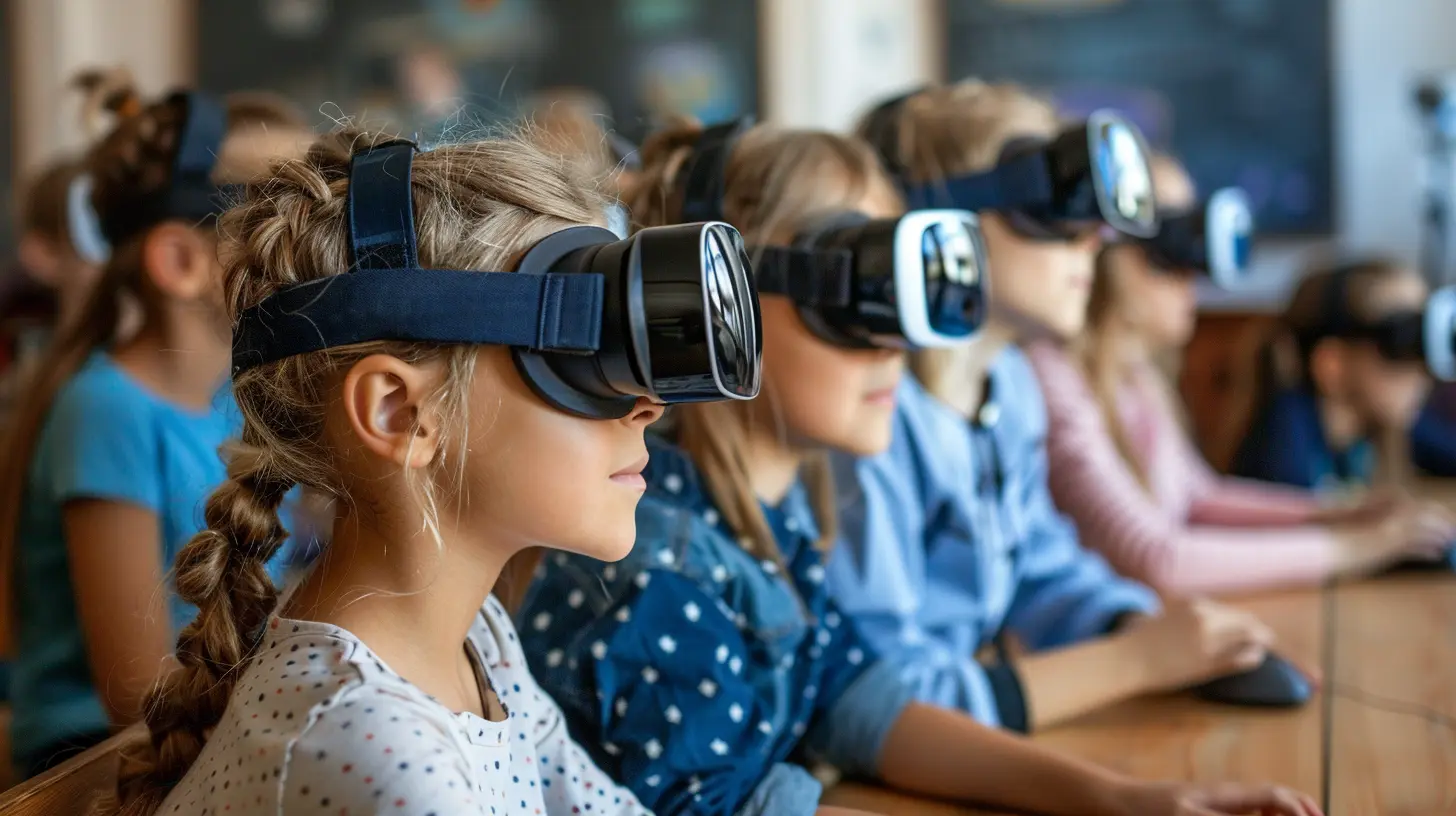27 January 2025
The age of digital transformation has ushered in a slew of technological tools that are reshaping education as we know it. One of the most thrilling innovations, especially in the world of science education, is the rise of virtual labs. Virtual labs are changing the way we teach and learn science concepts, allowing students to conduct experiments, visualize complex processes, and understand abstract theories in a risk-free, engaging environment. But how exactly can educators leverage these tools to enhance science learning?
In this article, we’ll dive into how to use virtual labs to teach science concepts, discussing why they work, how they can be integrated into the curriculum, and what benefits they bring to both teachers and students. So, buckle up, grab your digital goggles, and let’s get started!

What Are Virtual Labs?
Let’s start with the basics: what exactly is a virtual lab? A virtual lab is an online simulation of a physical science experiment. It mimics real-life laboratory environments, allowing students to perform experiments and observe results without needing physical equipment or materials. Imagine being able to conduct a chemistry experiment or explore the anatomy of a frog from the comfort of your home, using just a computer or tablet. Sounds like something out of a sci-fi movie, right? But it's real, and it's revolutionizing science education.Virtual labs can cover a wide range of subjects like biology, chemistry, physics, and even engineering. These labs are highly interactive, providing students with hands-on experience while also offering detailed visualizations that make understanding complex concepts a breeze.

Why Use Virtual Labs in Science Education?
Here's a question: Why should educators bother with virtual labs when physical labs have worked for decades? Well, think of virtual labs as the modern, tech-savvy sibling of traditional labs. They bring a whole new level of flexibility, accessibility, and engagement to the table. Let’s break down why using virtual labs can be a game-changer for teaching science concepts.1. Accessibility and Inclusivity
One of the most significant advantages of virtual labs is that they make science education more accessible. Not every school has state-of-the-art lab equipment, and budget constraints often limit the resources available to students. Virtual labs can fill this gap by offering a cost-effective solution that provides students access to high-quality experiments without the need for physical materials.Additionally, virtual labs can be used anywhere and anytime, as long as students have a device and internet connection. This is particularly beneficial for distance learning or homeschooling environments. It’s like having a portable science lab right in your backpack!
2. Safety First
Let’s be honest—some science experiments can be pretty dangerous. Working with chemicals or high-voltage electricity can be risky, especially for younger students. Virtual labs eliminate this danger by providing a safe space for students to explore, experiment, and even fail without any real-world consequences.Want to see what happens when you mix volatile substances? In a virtual lab, you can do just that without risking an explosion. It's a win-win situation: students get to explore their curiosity, and teachers don’t have to worry about safety regulations.
3. Immediate Feedback and Self-Paced Learning
Virtual labs often come with built-in feedback mechanisms. Students can get instant results and explanations, helping them understand what went right (or wrong) with their experiment. This immediate feedback loop is crucial for reinforcing learning and helping students grasp science concepts more effectively.Moreover, virtual labs allow for self-paced learning. Students can repeat experiments as many times as they want until they feel confident in their understanding, which is something that’s not always feasible in a traditional lab setting due to time and resource constraints.
4. Visualization of Abstract Concepts
Some science concepts are just plain hard to visualize. How do you show the movement of atoms? What about molecular bonding or the behavior of electrons in an electric field? Virtual labs come equipped with interactive simulations that provide detailed visualizations of these abstract ideas.Instead of relying on 2D textbook diagrams, students can manipulate 3D models, rotate them, and see the process in action. This hands-on interaction helps solidify their understanding of abstract scientific theories and makes learning more engaging.
How to Incorporate Virtual Labs into Your Science Curriculum
So, you’re sold on the idea of virtual labs, but how do you weave them into your existing curriculum? Here are some practical steps you can follow to make the most of these powerful tools.1. Start with Simple Experiments
Don’t dive into the deep end right away. Start by introducing virtual labs with simple experiments that align with your lesson objectives. For example, if you’re teaching basic chemistry, you could use a virtual lab to demonstrate the concept of pH levels or the reaction between acids and bases. These experiments are straightforward, making them an excellent starting point for students who are new to virtual labs.2. Align Virtual Labs with Learning Objectives
Always ensure that the virtual experiments you choose align with the learning objectives of your course. If you’re teaching a unit on Newtonian physics, for instance, use a virtual lab that simulates forces, motion, and energy transfer. This way, the virtual lab becomes an extension of your lesson, reinforcing what students are learning in real-time.3. Encourage Exploration
Virtual labs are perfect for fostering a sense of exploration and creative thinking. Encourage students to go beyond the basic requirements of the experiment. For example, if they're learning about chemical reactions, ask them to test what happens if they change the quantities of the reactants or introduce a new variable. By promoting exploration, you’ll encourage critical thinking and a deeper understanding of the concepts.4. Use Virtual Labs as a Supplement, Not a Replacement
While virtual labs are amazing, they shouldn’t completely replace traditional labs. There’s still something irreplaceable about physically handling equipment, measuring chemicals, and conducting hands-on experiments. Use virtual labs as a supplement to enhance learning, not as a full substitute. For example, you can use a virtual lab for the more dangerous or complex experiments while relying on physical labs for simpler, hands-on tasks.5. Assign Virtual Labs for Homework or Flipped Learning
Virtual labs can also be used as part of a flipped classroom model. Assign a virtual experiment as homework before the actual lesson. This way, students can come to class with a hands-on understanding of the concept, allowing for deeper discussions and collaborative problem-solving during class time.
Types of Virtual Labs You Can Utilize
The world of virtual labs is vast and constantly evolving. Here are some popular types of virtual labs that educators can incorporate into their science instruction:1. Simulations
Simulations allow students to engage with virtual representations of complex systems. For example, biology students can use simulations to explore cell division or genetic mutations. These labs often include interactive elements where students can manipulate variables and see how they affect the outcome.2. Virtual Reality (VR) Labs
Some virtual labs go a step further by incorporating virtual reality. Imagine putting on a VR headset and being transported into the bloodstream to watch red and white blood cells in action. VR labs provide an immersive experience that makes learning incredibly engaging and memorable.3. Augmented Reality (AR) Labs
Similar to VR, augmented reality labs blend the real world with digital elements. Students can use AR tools to overlay scientific models or diagrams onto their physical environment. This is especially useful for subjects like anatomy, where students can visualize 3D models of organs or bones right in front of them.4. Open-Source Virtual Labs
Many virtual labs are available for free or at a low cost. Websites such as PhET Interactive Simulations and Labster offer high-quality, open-source virtual labs for various scientific disciplines. These platforms are a great resource for teachers looking to integrate virtual labs into their classrooms without breaking the budget.Overcoming Challenges with Virtual Labs
While virtual labs are fantastic, they aren’t without their challenges. Here are a few common issues educators might face, along with some tips on how to overcome them:1. Technical Difficulties
Not every student will have access to a high-speed internet connection or a powerful computer. To mitigate this, try to choose virtual labs that are lightweight and don’t require significant computing power. Many platforms also offer offline versions or mobile apps.2. Lack of Hands-On Experience
As mentioned earlier, virtual labs shouldn’t replace physical labs entirely. While they provide excellent simulations, students still benefit from physically conducting experiments. Strive for a balance between the two.3. Student Engagement
Some students may initially struggle to engage with virtual labs, especially if they’re more accustomed to hands-on experiences. To combat this, provide clear instructions, and encourage them to explore and experiment. Make it fun—after all, science is all about curiosity!Conclusion
Virtual labs are a powerful tool for teaching science concepts in today’s digital age. They offer accessibility, safety, and unmatched opportunities for visualization and exploration. By integrating virtual labs into your curriculum, you can provide students with a dynamic, interactive, and engaging way to learn science. Whether you’re teaching chemistry, biology, or physics, virtual labs are a fantastic resource that can enhance your students’ understanding and love for science.So, what are you waiting for? Dive into the world of virtual labs and watch your students’ curiosity soar!












Thor McCallum
Great article! Virtual labs really make science engaging and accessible. They’re a fantastic way to bridge theory and practice, making learning both fun and effective!
April 3, 2025 at 12:34 PM